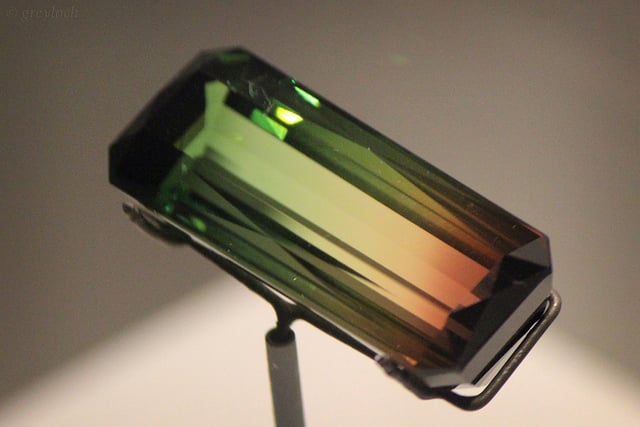Green Tourmaline and Rubellite: Emerald-Cutting Advice
Dark green tourmaline and red rubellite gems can look very black in an emerald cut. Learn how to minimize this effect and show off these rich colors best.
Answer:Emerald cuts tend to make tourmalines with dark colors, like dark red rubellites or green verdelites, appear even darker. Keep the end facets on the pavilion as steep as possible. 70° is good.
What if My Red or Green Tourmaline Has a Light C Axis?
Even if the tourmaline stone doesn't have a dark C axis, it tends to look black in the finished gem. Keeping them steep minimizes this.
Donald Clark, CSM IMG
Find Emerald-Cut Tourmalines in Our Photo Gallery
You can find examples of emerald-cut green and red tourmalines in our Gem Photo Gallery, like this 2.12-ct, blue-green tourmaline from Congo and this 3.88-ct rubellite from Nigeria.
More Emerald-Cut Tourmalines
International Gem Society
Related Articles
Tourmaline Gem, Price, and Jewelry Information
Rubellite Tourmaline Value, Price, and Jewelry Information
Blue Tourmaline (Indicolite) Buying Guide
Tourmaline Buying Guide
Latest Articles
Hambergite Value, Price, and Jewelry Information
Pearl Simulants: How to Spot Faux Pearls
Opal Buying Guide
Amethyst Sources Around the World: The Geological Story Behind These Purple Gemstones
Never Stop Learning
When you join the IGS community, you get trusted diamond & gemstone information when you need it.
Get Gemology Insights
Get started with the International Gem Society’s free guide to gemstone identification. Join our weekly newsletter & get a free copy of the Gem ID Checklist!
